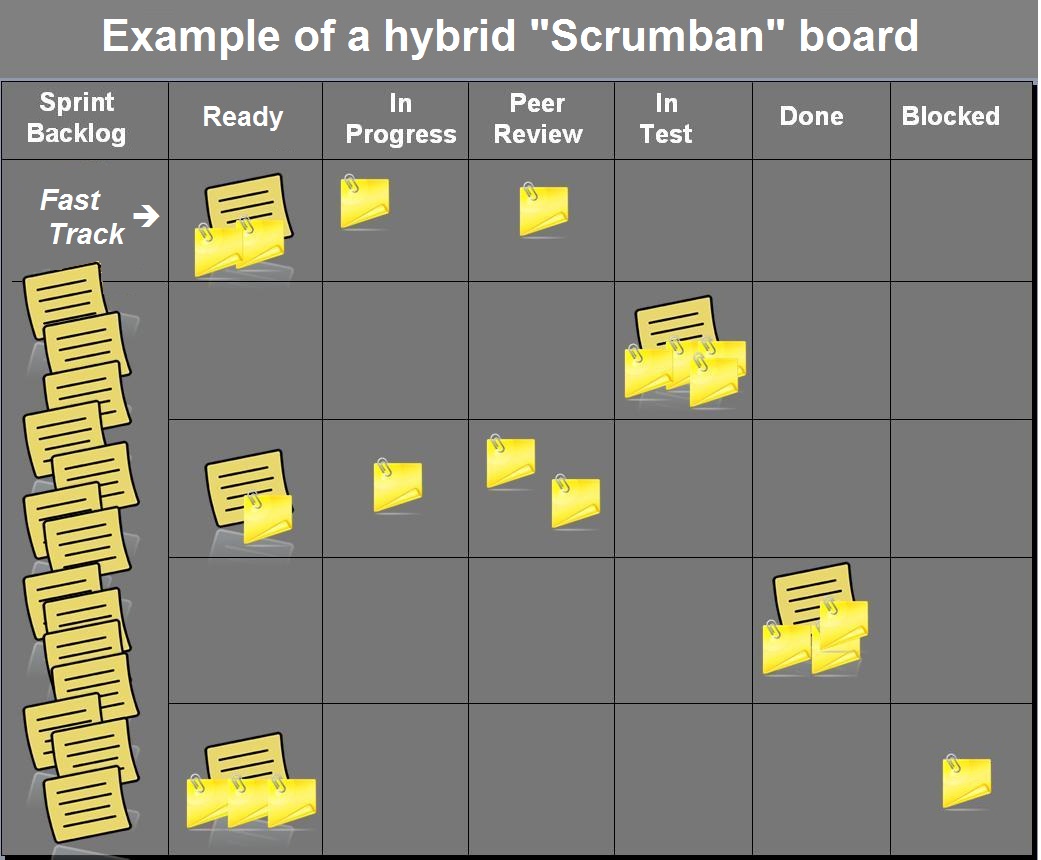With the rise of Agile, two most commonly used methodologies are Scrum and Kanban. For most teams, Scrum, because of its prescriptive framework, has proved the most popular practice over the decades. And why not, when part of a project with a fixed scope needs to be delivered within a two to four week period.
However, Scrum can put undue pressure on teams when the deadline is near yet the necessary daily meetings get longer and longer. Sounds familiar? That’s when the Kanban approach can help. The Kanban methodology provides a more flexible way for your production team to focus on ‘limiting work in progress’ (WIP), introducing changes through incremental improvements.
You can use Kanban as your main process, or you can combine it with any process that you are using (including Scrum). In this blog piece, we will reveal the advantages of Kanban and how it can be beneficial for you and your relationship with your clients in the long term.
WHAT IS KANBAN?
Kanban literally means “Visual Card” in Japanese. In the late 1940s, Taiichi Ohno developed Kanban to improve manufacturing efficiency. The philosophy of Kanban can be wrapped up in 4 principles:
- Visualize workflow:
• A whiteboard and stickers become the essential tools relied upon with this method. You can use the whiteboard to visualize the workflow, creating a column for each step. Then you can divide your work into smaller pieces and write them on stickers. Each work should belong to a column.
- Limit WIP:
• Decide how many items the work in progress column should have. By doing that, you won’t find yourself trying to manage more work than your team can handle thus causing a loss of quality and velocity.
- Focus on flow:
• Analyze, and measure your flow to ensure improvement of efficiency in the future.
- Continuous improvement:
• Once Kanban is established as your daily practice, your organization has to adapt the culture of continuous improvement by tracking flow, quality, throughput, lead times, etc. Experiments should happen regularly along the way so that changes will be made if necessary.
When comparing Kanban with Scrum, there are few main differences between the two:
|
|
Kanban |
Scrum |
|
Roles & Responsibilities |
There are no pre-defined roles for a team. Although there may still be a Project Manager, the team is encouraged to collaborate and chip in when any one person becomes overwhelmed. |
Each team member has a predefined role, where the Scrum master dictates timelines, Product owner defines goals and objectives and team members execute the work. |
|
Due Dates / Delivery Timelines |
Products and processes are delivered continuously on an as-needed basis (with due dates determined by the business as needed). |
Deliverables are determined by sprints, or set periods of time in which a set of work must be completed and ready for review. |
|
Delegation & Prioritization |
Uses a “pull system,” or a systematic workflow that allows team members to only “pull” new tasks once the previous task is complete. |
Also uses a “pull system” however an entire batch is pulled for each iteration. |
|
Modifications / Changes |
Allows for changes to be made to a project mid-stream, allowing for iterations and continuous improvement prior to the completion of a project. |
Changes during the sprint are strongly discouraged. |
|
Measurement of Productivity |
Measures production using “cycle time,” or the amount of time it takes to complete one full piece of a project from beginning to end. |
Measures production using velocity through sprints. Each sprint is laid out back-to-back and/or concurrently so that each additional sprint relies on the success of the one before it. |
|
Best Applications |
Best for projects with widely-varying priorities. |
Best for teams with stable priorities that may not change as much over time. |
Source: https://www.planview.com/resources/guide/introduction-to-kanban/kanban-vs-scrum/
WHY USING KANBAN?
“I prefer Kanban for long running project because of its flexibility”, Linus Ekstrom – Niteco’s VP Technology and June’s Episerver MVP says. “When you have already established a strong relationship with your customer, Kanban will help you strengthen that trust by providing continuous improvement. Unless the customer organization is strongly dependent on deliveries with certain cadence and high predictability of the deliveries in advance (where Scrum is a good choice), Kanban actually gives you an even more agile approach compared to Scrum.”
Kanban deals with changes better than Scrum because it doesn’t have to deliver anything within a fixed timeframe. A deliverable will be available because it’s ready, not because it’s forced to be ready right at the beginning of a sprint, which is the case with Scrum.
If each story in Scrum is part of a bigger story, Kanban’s story is the biggest one. That is why Kanban is best when it is being used by a senior team that’s dedicated. And a senior team with strong dedication, for most of the time, should be used in a long project without a fixed scope, a project that mutates through times. Developers adopting the Kanban methodology to keep track on non-IT client changes can complete appropriate actions in more orderly manner.
The best part of Kanban is you don’t have to choose between Kanban and Scrum. In fact, you can combine both styles to increase your team’s productivity. Some elements of Kanban can be used in Scrum to make Scrum more efficient.
For example, when talking about WIP, WIP in Scrum is limited by each iteration, not by by number. That means you can pull every work into WIP at the same time. However, you will realize it’s counterproductive to do so. Now, if you put a limit on WIP by number and start thinking about finishing current work first before starting new work, you are practically using Kanban in Scrum! Also, the workflow visualization is always a big plus in any situation.
Using Kanban can help your team work more efficiently in a long run. By analyzing, measuring and optimizing lead time, your team is able to perform a large number of tasks within a short amount of time.
What do you think? Share your thoughts in the comments section below.



